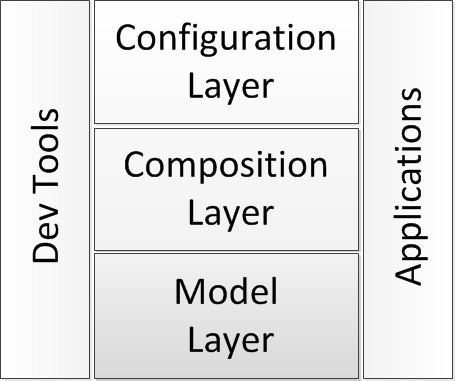 | ||
Modelling frameworks are used in modelling and simulation and can consist of a software infrastructure to develop and run mathematical models. They have provided a substantial step forward in the area of biophysical modelling with respect to monolithic implementations. The separation of algorithms from data, the reusability of I/O procedures and integration services, and the isolation of modelling solutions in discrete units has brought a solid advantage in the development of simulation systems. Modelling frameworks for agriculture have evolved over time, with different approaches and targets
Contents
- BioMA Biophysical Model Applications
- The architecture
- Applications
- Availability
- Links
- The BioMA Intellectual Property Rights model
- References
BioMA is a software framework developed focusing on platform-independent, re-usable components, including multi-model implementations at fine granularity.
BioMA - Biophysical Model Applications
BioMA (Biophysical Model Applications) is a public domain software framework designed and implemented for developing, parameterizing and running modelling solutions based on biophysical models in the domains of agriculture and environment. It is based on discrete conceptual units codified in freely extensible software components .
The goal of this framework is to rapidly bridge from prototypes to operational applications, enabling running and comparing different modelling solutions. A key aspect of the framework is the transparency which allows for quality evaluation of outputs in the various steps of the modelling workflow. The framework is based on framework-independent components, both for the modelling solutions and the graphical user's interfaces. The goal is not only to provide a framework for model development and operational use but also, and of no lesser importance, to provide a loose collection of objecst re-usable either standalone or in different frameworks. The software is developed using Microsoft C# language in the .NET framework.
The framework is a development of the work carried out under the APES task of the 6th EU Framework Programm SEAMLESS project.
Deployments of the platform and its tools and components have been used to create weather datasets for biophysical simulation, to estimate the impact on crop production in Europe, and adaptation, to simulate soil pathogens under climate change, to simulate the survival of insects damaging maize under climate change to estimate crop suitability to environment, to perform modelling solutions comparison at sub-model level, to develop a library of reusable models for crop development and growth, to estimate the impact of climate change on crop production in Latin America, to estimate fungal infections, to estimate agro-meteorological variables, to develop a library of functions to estimate soil hydraulic properties, to estimate quality of agricultural products.
BioMA applications and modelling solutions are the simulation tools used by the MARS unit of the European Commission to simulate agricultural production under scenarios of climate change. BioMA is also used in the EU FP7 project MODEXTREME.
The architecture
The simulation system is discretized in layers, each with its own features and requirements. Such layers are the Model Layer (ModL), where fine granularity models are implemented as discrete units, the Composition Layer (CompL), where basic models are linked into more complex, aggregated models, and the Configuration Layer (ConfL), which allows providing context specific parameterization (in the software sense) for operational use. Applications can span from simple console applications to user-interacting applications based on the model-view-controller pattern, in the simplest cases linking either directly to either the ModL or the CompL, or accessing model ConfL. In all cases, the component oriented architecture allows implementing a set of functionalities which impact on the richness of functionality of the system and on its transparency. Layers implement no top-down dependency among them, hence facilitating the independent reuse of tools, utilities, and model components in different applications and frameworks.
Applications
Advanced applications can be grouped under two categories:
Applications can be built based on the libraries as in the following figure. The libraries can be extended implementing new models, as shown in the software development kits, and new libraries can be added.
Availability
Model components and tools can be autonomously downloaded with the SDK at the components' portal. Same for modelling solutions (starting from 2016).
Applications must be requested by email, and, similarly to components, applications will be made available for free autonomous download during 2016.
Links
The BioMA Intellectual Property Rights model
Code of core components is available under the LGPL license, however, the reuse of binaries falls under the Creative Commons license as below, implying the no-commercial, share-alike clauses.
Application and tools are available under the Creative Commons license as binaries, however code can be shared under specific agreements between parties. Model component developers may make code available, however, they must make binaries available for reuse.
